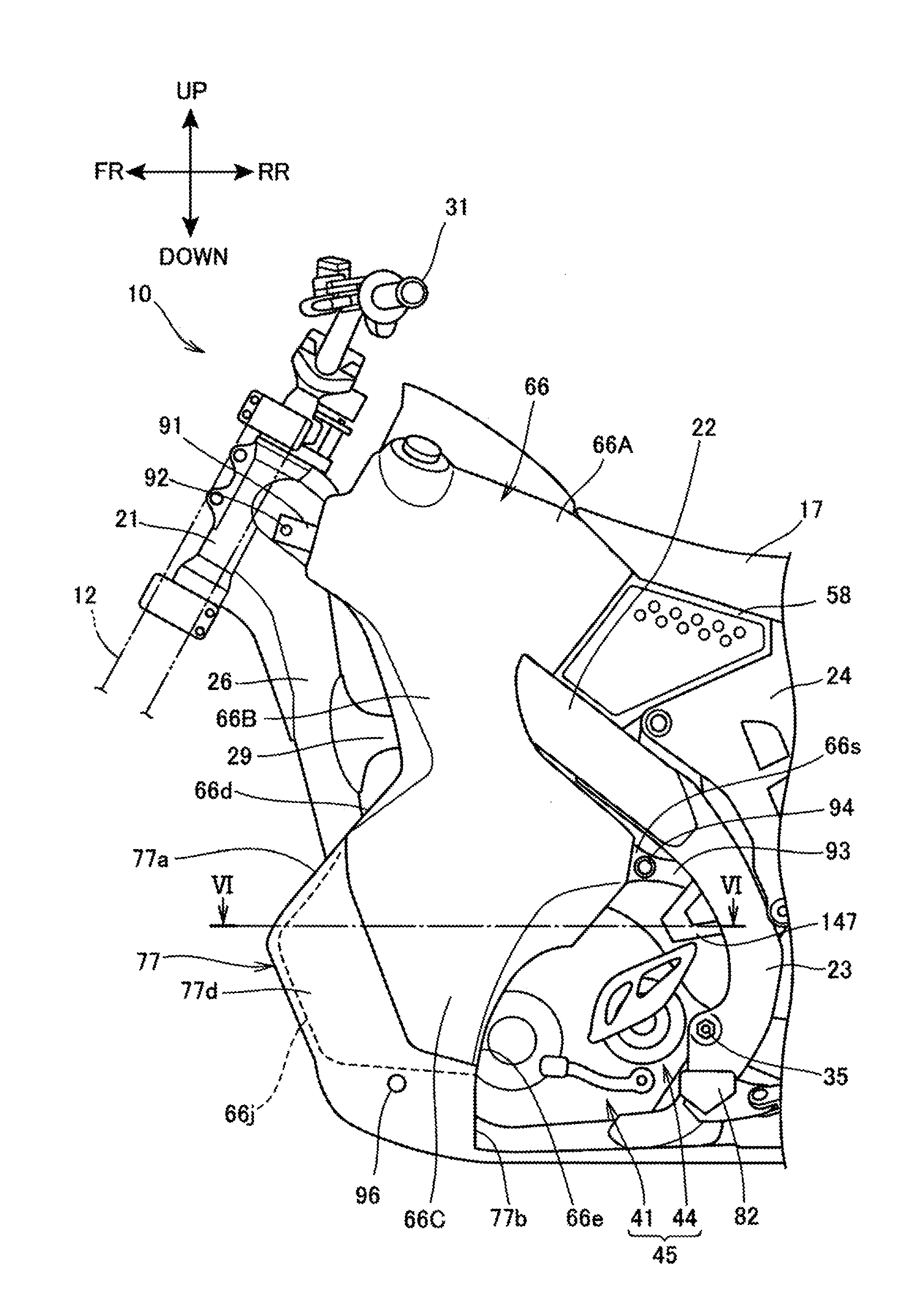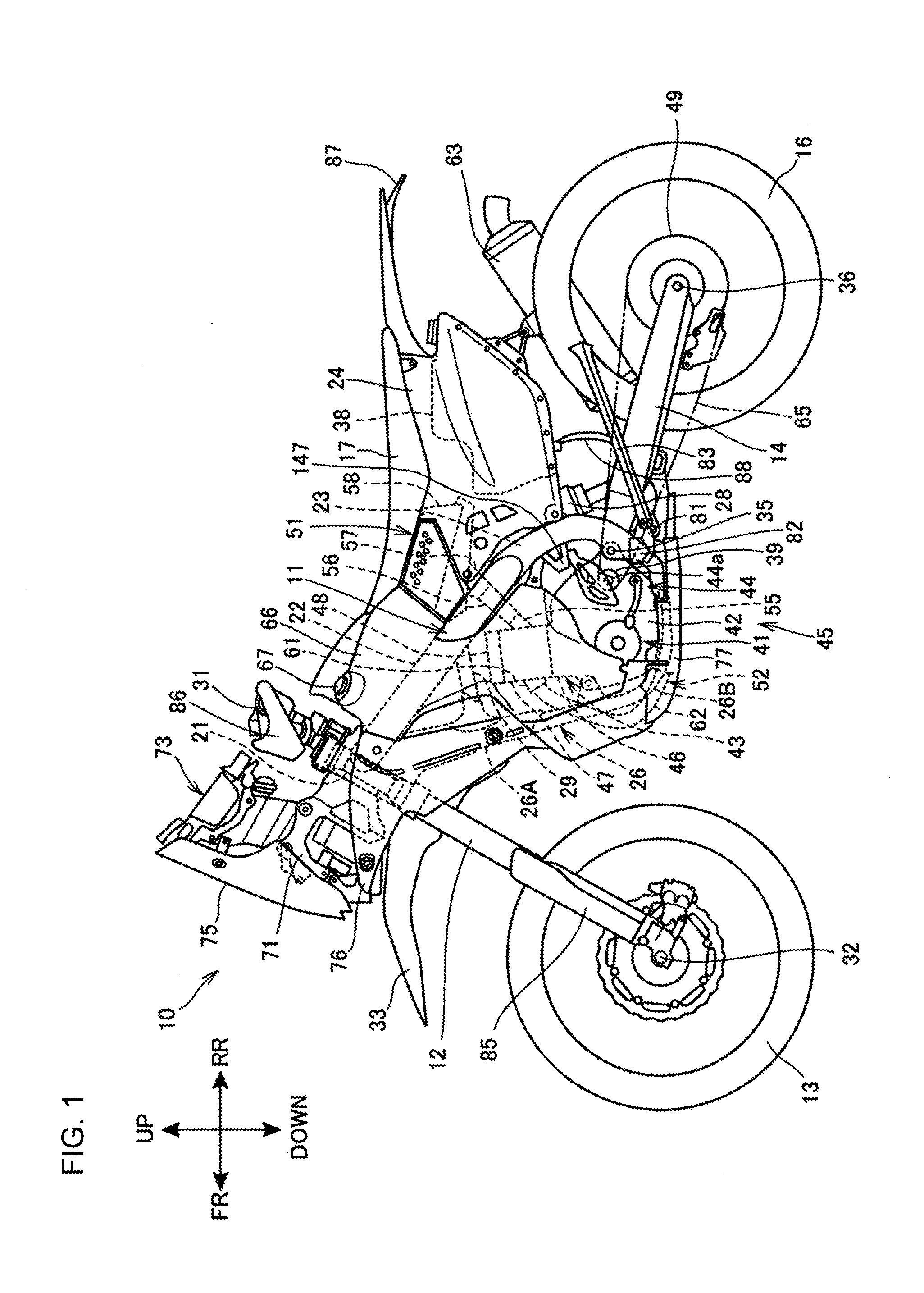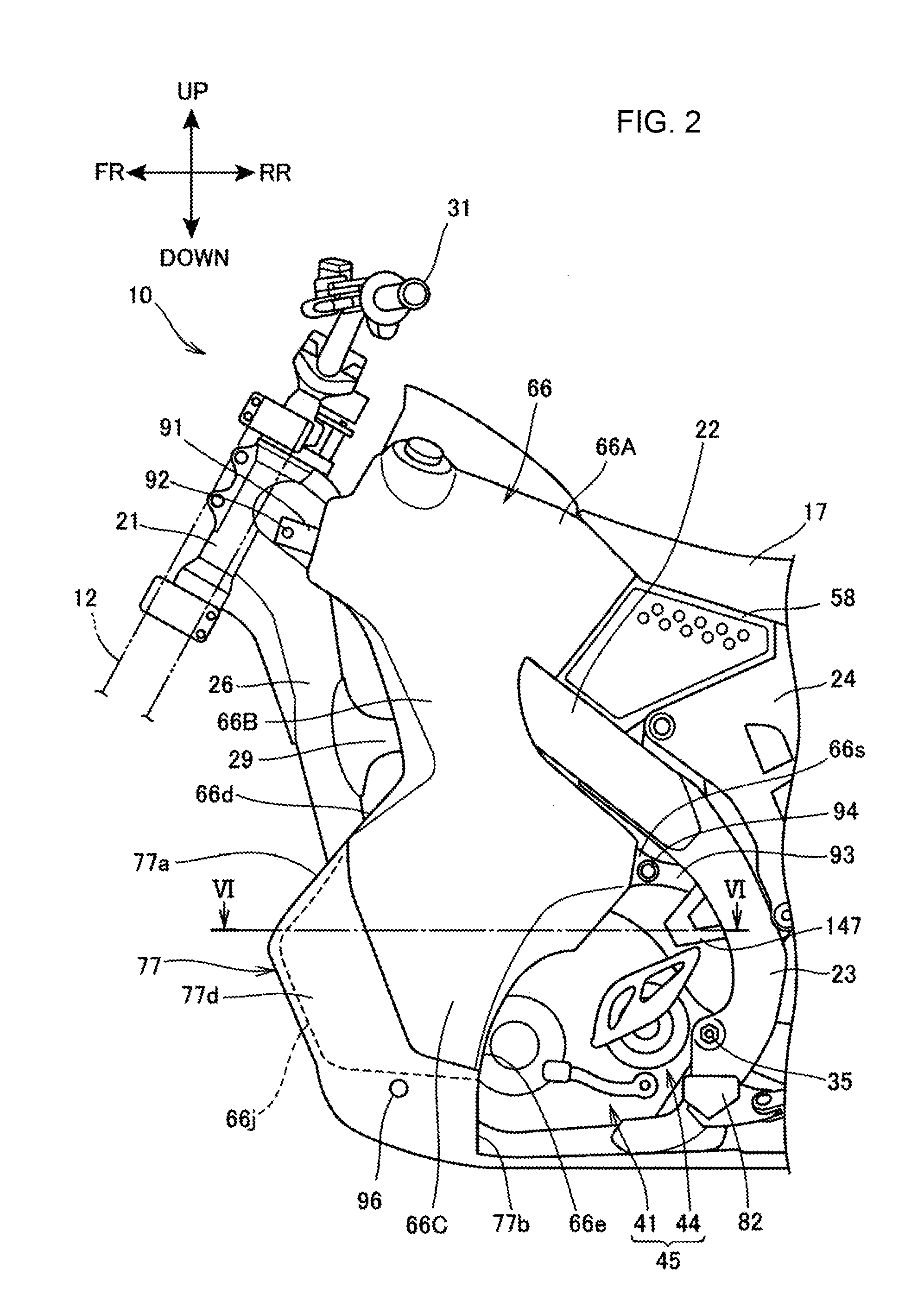Electrical component mounting structure for saddle-riding type vehicle
a technology of electric components and mounting structures, which is applied in the direction of transportation and packaging, cycle equipment, cycle equipment, etc., can solve the problems of excessively high level, limited space for disposing electrical components, and difficult to dispose of electrical components, so as to reduce the size and weight reduce the size and weight, and prevent excessive stiffness of the vehicle body frame
- Summary
- Abstract
- Description
- Claims
- Application Information
AI Technical Summary
Benefits of technology
Problems solved by technology
Method used
Image
Examples
first embodiment
[0028]FIG. 1 is a left side elevational view showing a motorcycle 10 including an electrical component mounting structure according to the present invention.
[0029]The motorcycle 10 is a saddle-riding type vehicle including a vehicle body frame 11, a front wheel 13, a rear wheel 16, and a seat 17. The front wheel 11 is supported via a front fork 12 at a front end portion of the vehicle body frame 11. The rear wheel 16 is supported via a swing arm 14 at a lower portion of the vehicle body frame 11. The seat 17 is supported at a rear portion of the vehicle body frame 11.
[0030]The vehicle body frame 11 assumes a framework of the motorcycle 10, including a head pipe 21, a pair of left and right main frames 22, a pair of left and right pivot frames 23, a rear frame 24, and a down frame 26.
[0031]The head pipe 21 constitutes the front end portion of the vehicle body frame 11. The front fork 12 is steerably supported on the head pipe 21. A handlebar 31 is mounted at an upper end portion of t...
second embodiment
[0094]FIG. 8 is a view showing the first ECU 175 and the second ECU 176, and the parts therearound in the second embodiment, as viewed from a direction identical to the direction in which FIG. 5 is viewed.
[0095]The recessed portion 174b has a bottom wall 174g having a substantially box shape. The bottom wall 174g includes a pair of left and right ECU mounting portions 174h and a pair of band hooks 174j and 174k. The ECU mounting portions 174h protrude rearwardly so that the second ECU 176 can be mounted thereon. The pair of band hooks 174j and 174k provides catches onto which both ends of a rubber band 179 that holds the second ECU 176 in place can be hooked.
[0096]The suspension stays 173 and the ECU bracket 174 are each formed from a plate that is bent into a corresponding shape, thus having low stiffness. The suspension stays 173 and the ECU bracket 174 thus can improve, for example, vehicle turning performance. In addition, both the first ECU 175 (see FIG. 7) and the second ECU 1...
PUM
 Login to View More
Login to View More Abstract
Description
Claims
Application Information
 Login to View More
Login to View More - R&D
- Intellectual Property
- Life Sciences
- Materials
- Tech Scout
- Unparalleled Data Quality
- Higher Quality Content
- 60% Fewer Hallucinations
Browse by: Latest US Patents, China's latest patents, Technical Efficacy Thesaurus, Application Domain, Technology Topic, Popular Technical Reports.
© 2025 PatSnap. All rights reserved.Legal|Privacy policy|Modern Slavery Act Transparency Statement|Sitemap|About US| Contact US: help@patsnap.com



